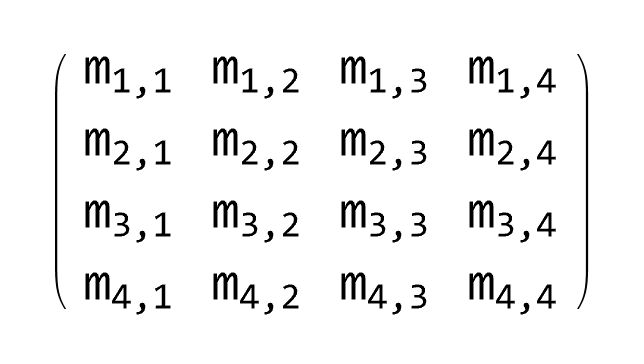Matrix Algebra
Fields
The Cartesian product of n copies of field 𝔽 is denoted by
\[
\mathbb{F}^n = \left\{ \left( x_1 , x_2 , \ldots , x_n \right) \ : \ x_j \in \mathbb{F}, \quad j=1,2,\ldots , n \right\} .
\]
It is the collection of ordered lists of n numbers from field 𝔽.
Lists
In computer science, a list or sequence is an abstract data type that represents a finite number of ordered values, where the same value may occur more than once.
An array is a data structure that holds fix number of elements and these elements should be of the same data type. Most of the data structure makes use of an array to implement their algorithm.
There is two important parts of the array: Elements and Index. Each item stored in the array is called an element and every element in the array has its own numerical value to identify the element. These elements allocate contiguous memory locations that allow easy modifications in data.
Lists and arrays both are mutable and store ordered items. List can store elements of different types, but arrays can store elements only of the same type. List provides more flexibility as it doesn't require explicit looping, but arrays require explicit looping to print elements.
Arrays in the Wolfram Language are just lists in which each element is itself a list. The Wolfram Language also allows much more general structures, that mix ...
In Mathenatica, Table can be used to make lists.
Table[p, 5]
{p, p, p, p, p}
Use Grid to display the result in a grid:
Grid[Table[x, 3, 5]]
\( \displaystyle \befi{array}{ccccc} x & x & x& x& x \\
x & x & x& x& x \\ x & x & x& x& x \end{array} \)
You can use Table with two variables to make a 2D array. The first variable corresponds to the row; the second to the column.
For instance, make an array of colors: red going down, blue going across:
Grid[Table[RGBColor[r, 0, b], {r, 0, 1, .2}, {b, 0, 1, .2}]]
https://www.wolfram.com/language/elementary-introduction/2nd-ed/13-arrays-or-lists-of-lists.html
- Anton, Howard (2005), Elementary Linear Algebra (Applications Version) (9th ed.), Wiley International
- Ch.G. Cullen, "Matrices and linear transformations" , Dover, reprint (1990) pp. 236ff
- Leon, S.J., de Pillis, L., Linear Algebra with Applications, Pearson, Harlow, ISBN 13: 978-1-292-35486-6

